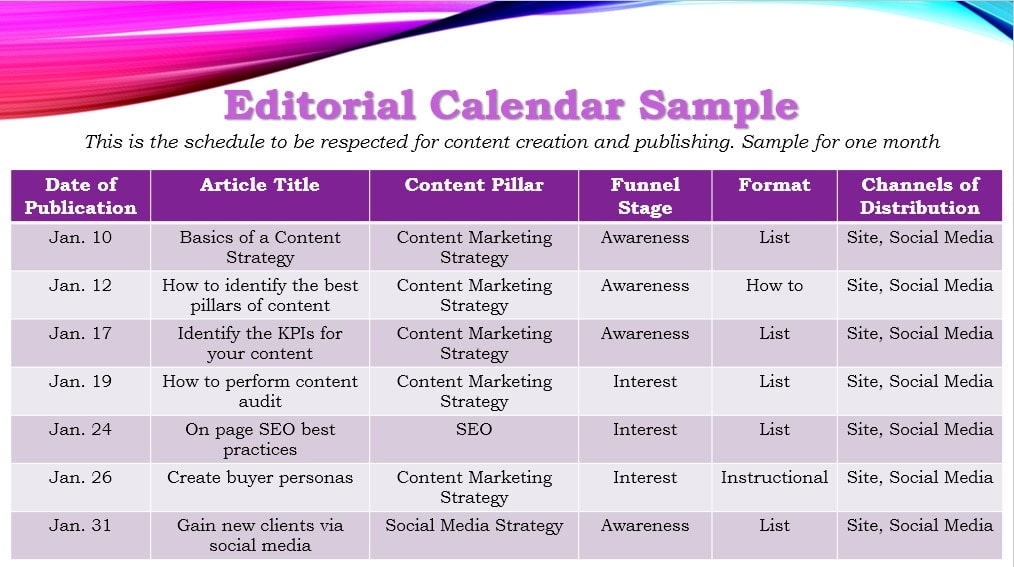Content marketing is the foundation of any successful digital marketing strategy and for good reason. It allows businesses to connect with their audience deeper, establish trust, and provide valuable information that can increase sales and brand loyalty.
However, creating content is not enough. You need a well-thought-out content creation strategy to guide your efforts and ensure your content is aligned with your business goals. This is where content creation strategy consulting comes in. Most of the time small businesses create their content strategy in-house and when they run into issues they hire external strategy consulting services.
Invest In Your Business
Your Content Strategy Doesn’t Deliver the Expected Results?
In this guide, we’ll walk you through the steps of an effective content creation strategy so you know how to work with a consulting company and what to ask for to unlock the power of content and take your business to the next level.
Ask your content creation strategy consulting collaborator for expert advice to improve:
The Understanding of Your Audience
Understanding your audience is the first step in creating an effective content strategy. Who are they? What do they want? What challenges are they facing? What are their pain points?
You can answer these questions by conducting market research and creating buyer personas. Buyer personas are fictional representations of your ideal customers. They help you understand your audience’s needs, goals, and challenges and enable you to create content that resonates with them. Here your consultant can help.
Once you have a clear understanding of your audience, defining your objectives becomes critical to creating an effective content creation strategy. By identifying your goals, whether it’s generating leads, increasing brand awareness, or establishing thought leadership, you can ensure that your content is purposeful and measurable and, ultimately, helps your business achieve its desired outcomes.
The Definition of Your Objectives
Once you understand your audience, the next step is to define your objectives. What do you want to achieve with your content? Do you want to generate leads, increase brand awareness, or establish thought leadership?
Defining your objectives will help you create content that is aligned with your business goals and drives results.
It’s important to ensure that your objectives are measurable and specific so that you can track the success of your content creation strategy and make data-driven decisions for future efforts. Additionally, regularly reviewing and adjusting your objectives can help you stay agile and responsive to changes in your industry and audience.
The Development of Your Content Plan
With your audience and objectives in mind, it’s time to develop a content strategy. A content strategy is a roadmap that outlines the type of content you’ll create, how you’ll distribute it, and how to measure its success.
A content strategy helps you stay focused and consistent with your messaging and enables you to make data-driven decisions about your content creation efforts. By creating a well-defined content strategy, you can maximize the impact of your content and achieve your business goals more effectively.
Your content strategy should include the following:
- Content types (e.g., blog posts, videos, infographics)
- Content themes/topics
- Content distribution channels (e.g., social media, email, website)
- Content promotion tactics
- Metrics for measuring success

The Quality of the Content Produced
Creating high-quality content in combination with modern web design is crucial for the success of your content marketing efforts. Your content should be informative, engaging, and relevant to your audience.
As we mentioned above, it’s important to consider the format of your content, such as written articles, videos, infographics, or podcasts, as different formats can appeal to different types of audiences and increase the overall effectiveness of your content strategy.
When creating content, consider the following:
- Use a variety of content formats (e.g., blog posts, videos, infographics)
- Use visuals to enhance your content (e.g., images, videos, infographics)
- Use data and research to support your claims
- Use a conversational tone that resonates with your audience
- Optimize your content for search engines
The Distribution of Your Content
Creating high-quality content is just the first step. You also need to distribute your content effectively. Your distribution strategy should align with your content strategy and objectives.
There are various ways to distribute your content, such as social media, email marketing, guest blogging, and influencer marketing. Your distribution channels should be selected based on your audience’s preferences, behavior, and content consumption. Measuring the success of your distribution strategy will help you optimize and improve your approach over time.
Consider the following when distributing your content:
- Use social media to promote your content
- Include calls-to-action (CTAs) in your content to drive conversions
- Use email marketing to distribute your content to your subscribers
- Use paid promotion tactics (e.g., PPC, social media advertising) to increase visibility and reach
The Measurement of Your Results
Finally, to ensure the success of your content creation strategy, you need to measure your results. Measuring your results will help you understand what’s working and what’s not and enable you to make data-driven decisions to optimize your strategy.
Consider the following metrics when measuring your results:
- Traffic to your website/blog
- Engagement metrics (e.g., likes, shares, comments)
- Conversions (e.g., form submissions, purchases)
- Return on investment (ROI)
To analyze your results, you can use tools like Google Analytics to track traffic, engagement, and other key metrics. You can also solicit feedback from your audience through surveys, comments, and social media. By analyzing this data, you can identify areas of improvement and adjust your strategy as needed.
It’s also important to regularly review your content calendar and update it as necessary. This will help ensure that you stay on track with your goals and adjust your approach based on what’s working and what’s not.
Conclusion
Creating a content creation strategy is essential for any business looking to reach and engage its audience effectively. With the right approach, you can unlock the power of content and drive meaningful results for your brand.
When creating your content creation strategy, it’s important to start by defining your goals and audience, conducting thorough research, and developing a comprehensive plan. You should also focus on creating high-quality, valuable content that resonates with your audience and delivers on your brand promise.
By following these best practices, analyzing your results, and refining your approach as needed, you can develop a winning content creation strategy that drives growth and success for your business.

